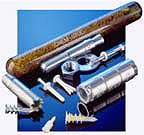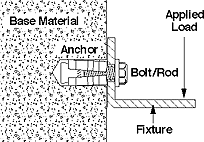There are three different types of anchoring systems which all have their own benefits. We have divided this section into these three categories:
- Powder Actuated Fasteners - A system of installation tools & guns, pins & powder loads to drive a pin through steel or wood into any base material.
- Mechanical Anchors - Conventional devices which insert into a pre-drilled hole and mechanically “expand” to provide holding power for any type of load.
- Adhesive Anchors - A system using various epoxies and tools to chemically anchor a load into a pre-drilled hole.



